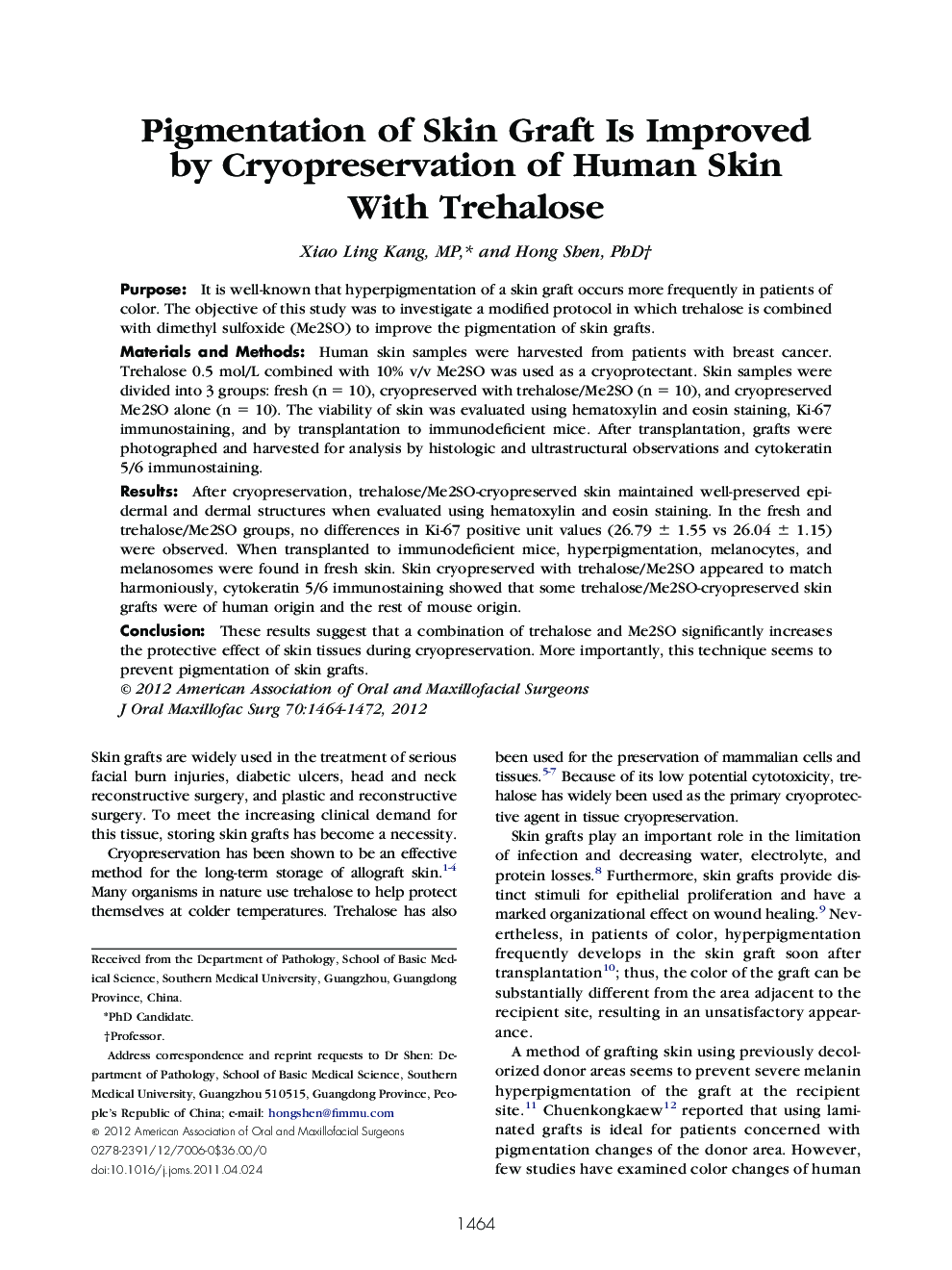| Article ID | Journal | Published Year | Pages | File Type |
|---|---|---|---|---|
| 3153114 | Journal of Oral and Maxillofacial Surgery | 2012 | 9 Pages |
PurposeIt is well-known that hyperpigmentation of a skin graft occurs more frequently in patients of color. The objective of this study was to investigate a modified protocol in which trehalose is combined with dimethyl sulfoxide (Me2SO) to improve the pigmentation of skin grafts.Materials and MethodsHuman skin samples were harvested from patients with breast cancer. Trehalose 0.5 mol/L combined with 10% v/v Me2SO was used as a cryoprotectant. Skin samples were divided into 3 groups: fresh (n = 10), cryopreserved with trehalose/Me2SO (n = 10), and cryopreserved Me2SO alone (n = 10). The viability of skin was evaluated using hematoxylin and eosin staining, Ki-67 immunostaining, and by transplantation to immunodeficient mice. After transplantation, grafts were photographed and harvested for analysis by histologic and ultrastructural observations and cytokeratin 5/6 immunostaining.ResultsAfter cryopreservation, trehalose/Me2SO-cryopreserved skin maintained well-preserved epidermal and dermal structures when evaluated using hematoxylin and eosin staining. In the fresh and trehalose/Me2SO groups, no differences in Ki-67 positive unit values (26.79 ± 1.55 vs 26.04 ± 1.15) were observed. When transplanted to immunodeficient mice, hyperpigmentation, melanocytes, and melanosomes were found in fresh skin. Skin cryopreserved with trehalose/Me2SO appeared to match harmoniously, cytokeratin 5/6 immunostaining showed that some trehalose/Me2SO-cryopreserved skin grafts were of human origin and the rest of mouse origin.ConclusionThese results suggest that a combination of trehalose and Me2SO significantly increases the protective effect of skin tissues during cryopreservation. More importantly, this technique seems to prevent pigmentation of skin grafts.
